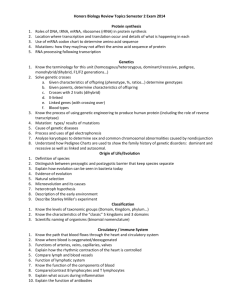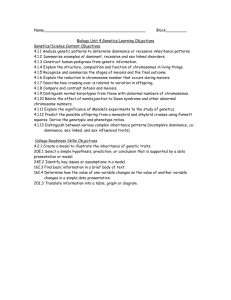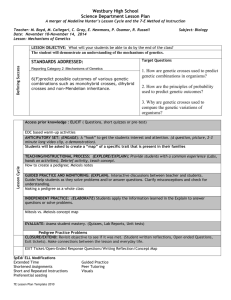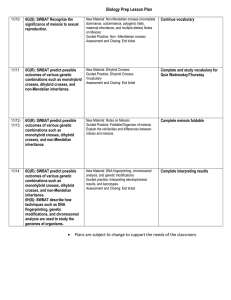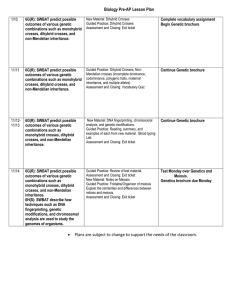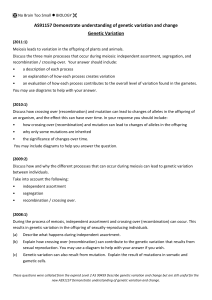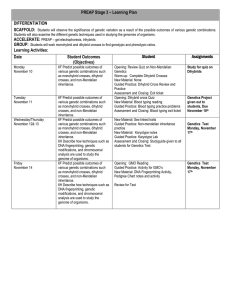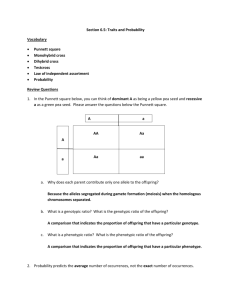Can You Sort It Out?
advertisement
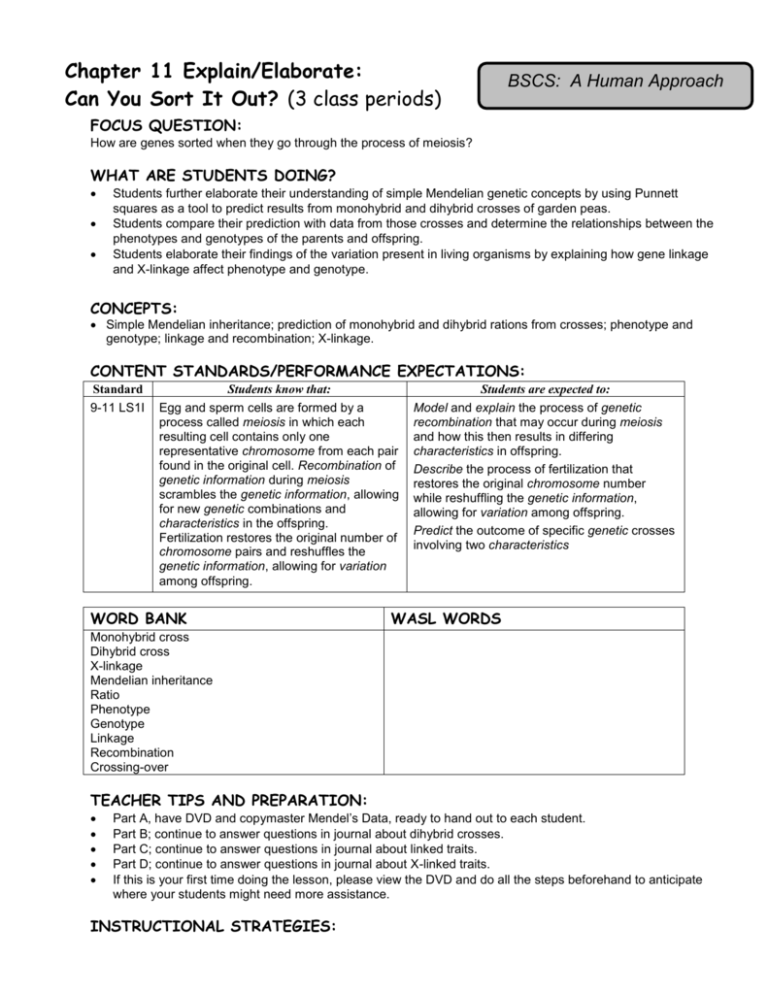
Chapter 11 Explain/Elaborate: Can You Sort It Out? (3 class periods) BSCS: A Human Approach FOCUS QUESTION: How are genes sorted when they go through the process of meiosis? WHAT ARE STUDENTS DOING? Students further elaborate their understanding of simple Mendelian genetic concepts by using Punnett squares as a tool to predict results from monohybrid and dihybrid crosses of garden peas. Students compare their prediction with data from those crosses and determine the relationships between the phenotypes and genotypes of the parents and offspring. Students elaborate their findings of the variation present in living organisms by explaining how gene linkage and X-linkage affect phenotype and genotype. CONCEPTS: Simple Mendelian inheritance; prediction of monohybrid and dihybrid rations from crosses; phenotype and genotype; linkage and recombination; X-linkage. CONTENT STANDARDS/PERFORMANCE EXPECTATIONS: Standard Students know that: 9-11 LS1I Egg and sperm cells are formed by a process called meiosis in which each resulting cell contains only one representative chromosome from each pair found in the original cell. Recombination of genetic information during meiosis scrambles the genetic information, allowing for new genetic combinations and characteristics in the offspring. Fertilization restores the original number of chromosome pairs and reshuffles the genetic information, allowing for variation among offspring. WORD BANK Students are expected to: Model and explain the process of genetic recombination that may occur during meiosis and how this then results in differing characteristics in offspring. Describe the process of fertilization that restores the original chromosome number while reshuffling the genetic information, allowing for variation among offspring. Predict the outcome of specific genetic crosses involving two characteristics WASL WORDS Monohybrid cross Dihybrid cross X-linkage Mendelian inheritance Ratio Phenotype Genotype Linkage Recombination Crossing-over TEACHER TIPS AND PREPARATION: Part A, have DVD and copymaster Mendel’s Data, ready to hand out to each student. Part B; continue to answer questions in journal about dihybrid crosses. Part C; continue to answer questions in journal about linked traits. Part D; continue to answer questions in journal about X-linked traits. If this is your first time doing the lesson, please view the DVD and do all the steps beforehand to anticipate where your students might need more assistance. INSTRUCTIONAL STRATEGIES: Students will work in small groups to complete their tasks. You may create progress check-points for students to be sure that they are on the right track before moving onto the next section. ASSESSMENT: Students can complete the analysis questions on page 437 of their SG. DIFFERENTIATION: For ELL and Special Ed students you can use the Unit 4 Literacy Strategies to help them interact with the text when they are reading the essays. CULTURAL RELEVANCE: Analysis question #6 addresses X-linked traits in a small population, a royal family, Czarevitch Alexis’s family on page 419 of the SG. This could lead to a discussion of X-linked traits in small populations. ADDITIONAL RESOURCES: NA
